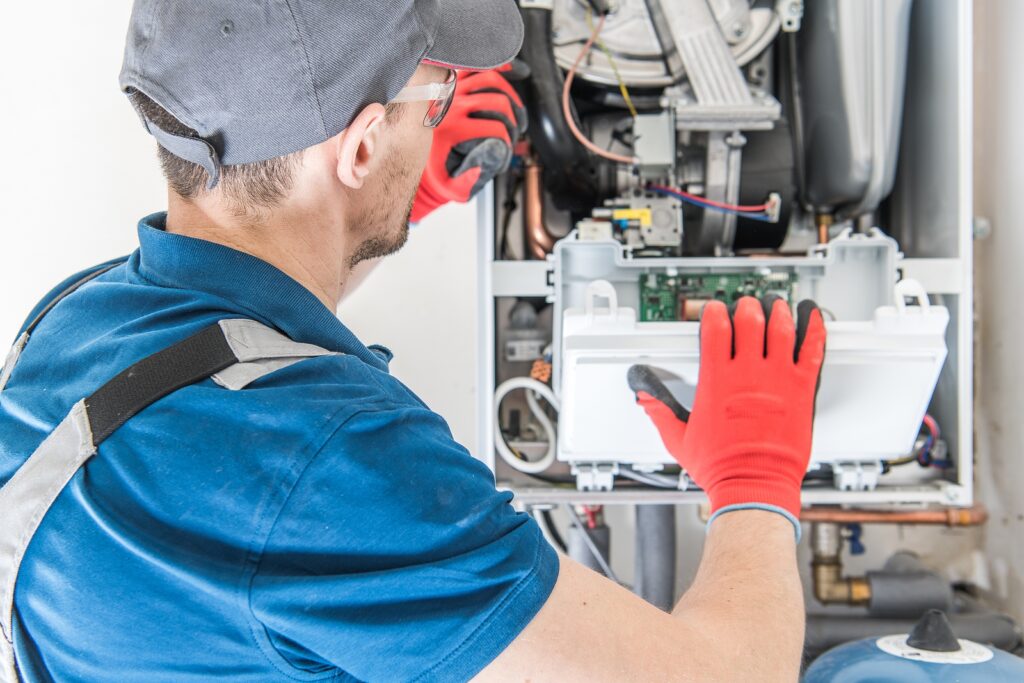Common Causes of Pilot Light and Ignition Problems in Gas Furnaces
A gas furnace is one of the most important parts of a home’s comfort system. Families in Downey, CA and surrounding areas depend on it to keep warm during cool nights. When the furnace fails to start, the issue often traces back to the pilot light or ignition system.

Pilot light and ignition problems can stop the furnace from producing heat at all. For many homeowners, this is frustrating and stressful, especially during a cold spell. Understanding the common causes helps you recognize warning signs early, take simple troubleshooting steps, and know when it’s time to call a professional.
How Gas Furnace Ignition Works
Modern furnaces typically use one of two ignition methods: a standing pilot light or an electronic ignition system.
- A standing pilot light burns constantly and ignites the burners when the thermostat signals the furnace to heat.
- An electronic ignition system, which is more common in newer furnaces, uses either a hot surface ignitor or intermittent spark ignition to light the burners only when needed.
Both systems are designed to be reliable, but they are also vulnerable to wear, dirt, or mechanical failure.
Dirt and Debris Blocking the Pilot Light or Ignitor
Dust, dirt, and soot are major culprits behind pilot light and ignition failures. Over time, buildup blocks the pilot opening or coats the electronic ignitor. This prevents the flame from forming or stops the ignitor from reaching the correct temperature.
Homeowners may notice the pilot flame flickering, sputtering, or not lighting at all. With electronic ignition, a dirty ignitor often leads to repeated failed startup attempts. Regular cleaning during furnace maintenance helps prevent this problem and keeps the system reliable.
Faulty Thermocouple or Flame Sensor
For furnaces with a standing pilot, the thermocouple plays a critical safety role. It senses whether the pilot flame is lit and shuts off the gas if the flame goes out. A worn or misaligned thermocouple may shut off gas flow even when the pilot is burning, leading to a furnace that won’t stay on.
In electronic ignition furnaces, a flame sensor serves a similar role. If it becomes dirty or damaged, the system shuts down as a safety precaution. These sensors are small parts, but when they fail, they stop the entire furnace from working.
Gas Supply or Pressure Problems
A gas furnace relies on steady gas pressure to light the pilot and keep the burners running. If the gas valve is faulty, partially closed, or there’s an issue with supply, the pilot light will struggle to stay lit.
Sometimes, gas lines develop blockages or leaks that interrupt flow. In Downey and surrounding areas, older homes with aging gas lines may see this issue more often. Any gas supply concern should be handled immediately by a professional for safety reasons.
Faulty Ignitor or Worn-Out Components
Electronic ignition systems use parts that wear out with age. A hot surface ignitor can crack after years of heating and cooling cycles. Spark ignitors can lose their ability to create a consistent spark.
When these parts fail, the furnace may click repeatedly without starting, or it may cycle on and off without producing heat. Replacing a worn ignitor is a common repair and often restores the system quickly.
Drafts or Ventilation Issues
A strong draft near the furnace can blow out the pilot light. Poor ventilation also affects the combustion process and makes it harder for the flame to stay stable. Furnaces located in basements, garages, or utility closets may be more vulnerable to this problem.
Blocked or dirty flue pipes also interfere with combustion airflow, leading to ignition problems. Regular inspection and cleaning of venting systems help maintain safe and consistent operation.
Electrical Issues Affecting Ignition
Modern furnaces depend on electrical controls, sensors, and circuits to operate correctly. Loose wiring, faulty switches, or damaged control boards can prevent the ignition sequence from completing. Homeowners may notice no response when the thermostat calls for heat or frequent system shutoffs.
Since electricity and gas are both involved, electrical ignition problems should always be diagnosed by a qualified technician.
Preventing Pilot Light and Ignition Failures
Most pilot and ignition problems can be prevented with regular furnace maintenance. Professional inspections include cleaning burners, checking sensors, testing gas pressure, and verifying that the ignition system works as designed.
Homeowners can also help by replacing filters regularly, keeping the furnace area clean, and scheduling annual tune-ups before the heating season starts. Preventative care reduces breakdowns and keeps furnaces in Downey homes running when families need them most.
FAQs About Pilot Light and Ignition Problems
Q1: Why does my pilot light keep going out?
A weak flame, dirty thermocouple, or drafts can cause the pilot light to go out repeatedly. A professional inspection helps identify the exact cause.
Q2: How do I know if my furnace ignitor is bad?
Signs include repeated clicking sounds, the furnace not starting, or the ignitor not glowing red when the system tries to start.
Q3: Can I clean a flame sensor myself?
Yes, but it requires care. A lightly sanded cleaning with fine steel wool can restore function. If the sensor is damaged, replacement is best.
Q4: Why does my furnace click but not start?
This often means the ignitor is failing, the flame sensor is dirty, or the gas valve is not opening properly.
Q5: How often should my furnace ignition system be inspected?
At least once a year during a heating tune-up. Regular checks keep parts clean, safe, and reliable.
Call Downey Plumbing Heating & Air Conditioning at 562-646-1221 for expert gas furnace repair and maintenance in Downey, CA and nearby areas.



